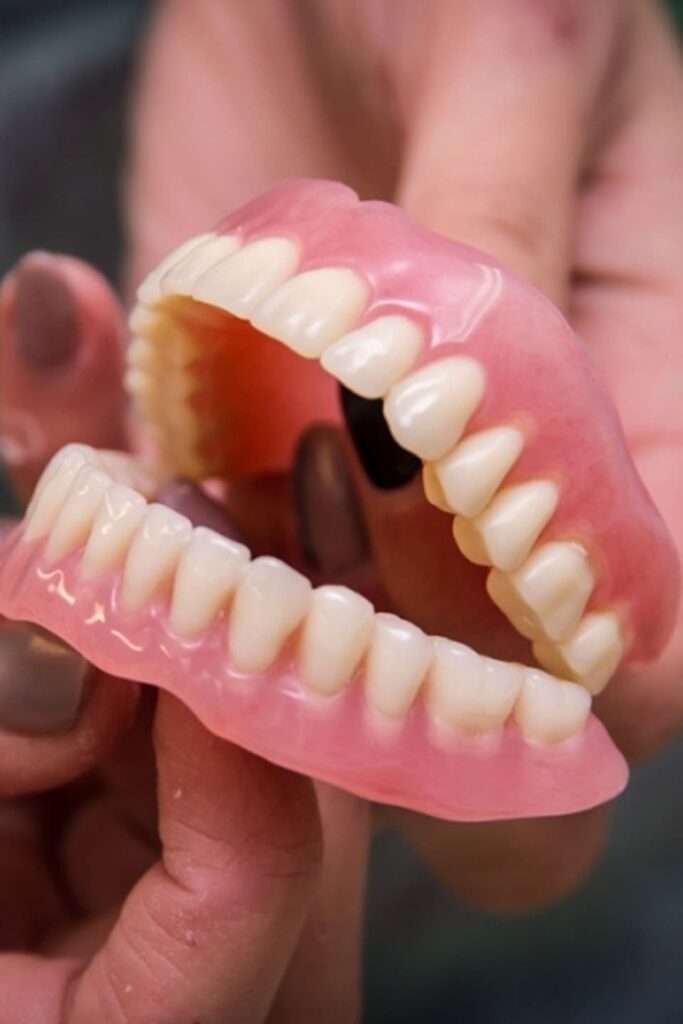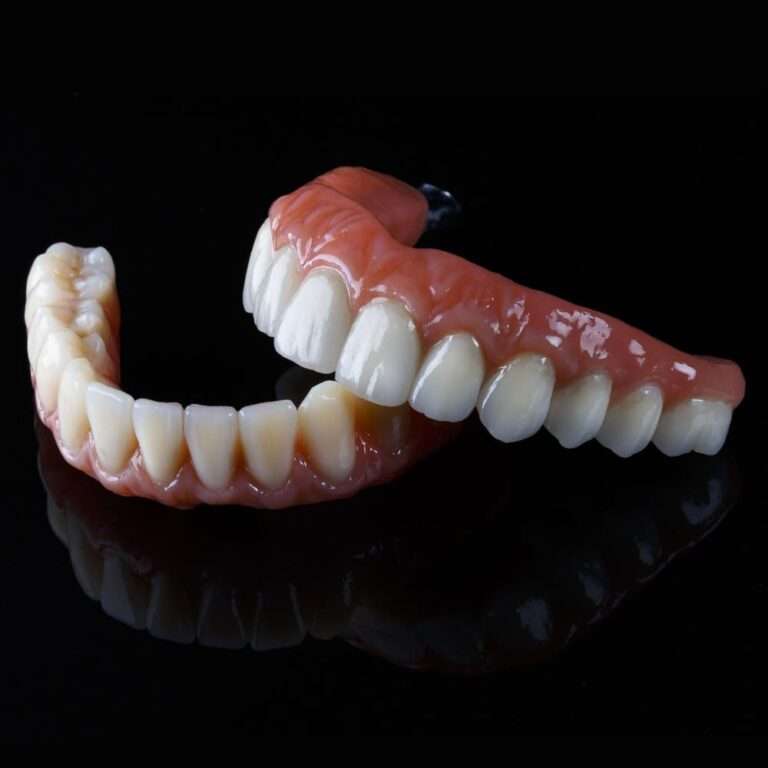Total And Partial Prosthesis
Total Dentures
Complete dentures are prosthetic devices used when all natural teeth are missing. They are designed to replicate the appearance and function of natural teeth. These dentures rely on the mandibular bone in the lower jaw and the alveolar ridge in the upper jaw for support, which remain after tooth loss.
The key elements for successful complete dentures are stability and retention.

Conservatism
Retention refers to the anatomical, physical, and mechanical resistance of a denture against vertical dislodgement within the mouth.
Anatomical retention is achieved when the denture stays in place by adhering to the natural structures of the mouth without being negatively influenced by them.
Physical retention involves factors such as adhesion between the denture and oral tissues, suction, the weight of the prosthesis, and the viscosity of saliva.
Mechanical retention refers to how the denture remains stable due to its design—such as proper closure, tooth alignment, and its ability to stay secure without relying solely on the surrounding anatomical structures.
Measurement for complete dentures?
The impression-taking process is often the least liked part of denture treatment for patients. During the fabrication of full dentures, various movements are required to capture the anatomical structures and ensure the denture fits well with the patient’s oral anatomy. Impressions are taken in two stages, with the second stage being more detailed to achieve better accuracy and adhesion. Although modern 3D scanning technology has made this process more comfortable, some traditional techniques are still in use.
What should ideal complete dentures be like?
The ideal complete denture should ensure anatomical, mechanical, and physiological stability and retention within the mouth, thereby maximizing the patient’s ability to eat and drink (function), speak clearly (phonation), and maintain a natural appearance (aesthetics).
Partial Dentures
Partial dentures are used to replace missing teeth by anchoring onto the patient’s existing natural teeth with clasps or hooks for support.
Today, partial dentures are often preferred for patients who are unable to receive implants or crown-bridge treatments due to financial constraints or other limitations.
There are various types of partial dentures available, including cast metal (skeletal), precision attachment, and telescopic dentures. The most suitable option is selected based on the patient’s oral condition and budget.

Fixed crown bridge prostheses
Fixed crown and bridge prostheses are used in cases of single, double, or triple tooth loss by preparing (shaping) the teeth adjacent to the missing area.
For patients who are unable to undergo implant treatment due to financial or other reasons, crown bridge procedures are performed by taking support from the teeth in front of and behind the gap. These prostheses are categorized as metal-supported, zirconium-based, or non-aesthetic.
Metal-supported crowns are generally preferred in the back regions of the mouth where aesthetics are less of a concern, as they do not provide the desired level of natural appearance. In the front regions, where appearance is important, more aesthetic options such as zirconium substructures, full ceramic crowns, or laminate veneers are commonly chosen—unless a metal-supported option is specifically indicated or requested by the patient.
What are the differences between a metal-supported crown bridge and a zirconium-based crown bridge?
In metal-supported crown bridges, porcelain is layered over an opaque material applied to a metal substructure that is cast using precious metal alloys.
Zirconium crowns, on the other hand, are made from a white material that reflects light more naturally, resulting in a more lifelike appearance. Zirconium is biocompatible and does not cause adverse reactions in the oral tissues. With proper use and good oral hygiene, zirconium restorations can retain their appearance and health for many years.
Some patients may experience allergic reactions or toxic effects from the alloys used in metal-supported prostheses. Over time, darkening of the gums near the metal can also occur. Ideally, a crown bridge or single crown prosthesis should effectively restore the missing tooth, support functional use and speech, and be compatible with the oral tissues while maintaining biocompatibility.
Fixed prostheses made for aesthetic purposes.
Nowadays, in teeth with excessive material loss, instead of cutting the tooth further and making a crown, the method of filling only the missing parts of the teeth with the inlay onlay method is preferred.
At the same time, patients who do not prefer orthodontics can achieve aesthetic health by choosing laminate veneers in cases of filling the gaps between the teeth, compensating for the aesthetics of teeth with excessive enamel stains and excessive enamel loss on the front teeth, and also in cases of slight crowding.

Let’s Get in Touch
You can contact us immediately to benefit from the Total And Partial Prosthesis treatment
in our Oral and Dental Health Hospital.
